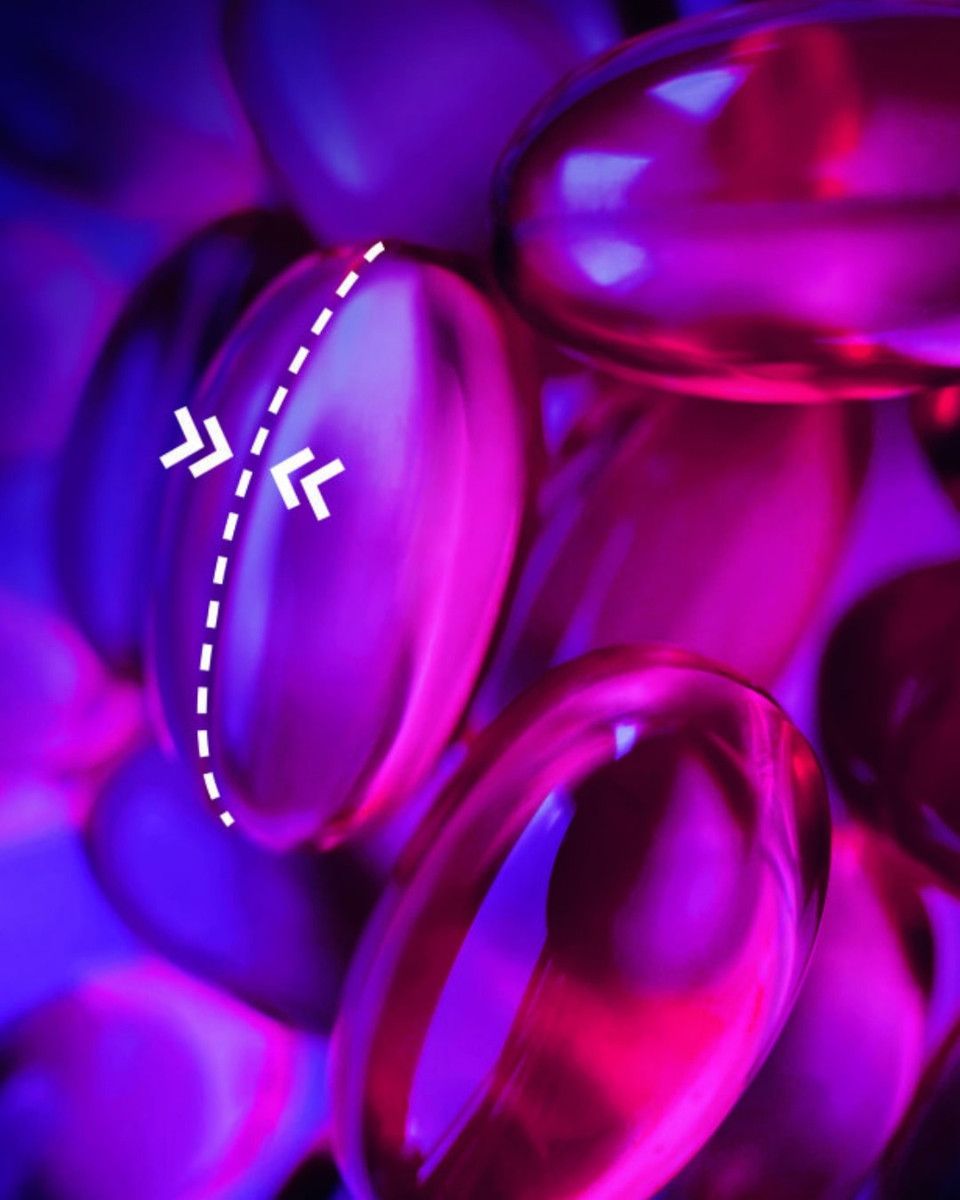Gelita’s Easyseal gelatin increases soft gel capsules seams by up to 50% to reduce occurrence of leaking: 2023 SupplySide West Report
Nutritional Outlook learned more about Gelita's Easyseal gelatin at this year's SupplySide West. The gelatin has the potential to reduce production cost and improve efficiency for manufacturers.
Easyseal capsule. Image courtesy of Gelita

Are you dealing with soft gel capsule leakage? According to Stephan Hausmanns, head of global marketing management, BU performance solutions, for Gelita, if the answer to that question is “no,” then chances are that you are actually managing leakage by reducing the speed of your machinery. In an effort to solve the issue of soft gel leakage, at this year’s SupplySide West Gelita launched a gelatin soft gel solution, called Easyseal, that purports to significantly reduce the occurrence of leaking during soft gel production.
Leakers are a nuisance. So many soft gel capsule products have an oil-based fill which means that when soft gels are drying on the tray, and there is a leak, the oil spreads and can ruin a batch. As mentioned before, some deal with this by reducing the speed of the machinery. It’s a simple solution, but ultimately decreases productivity and yield. Others just treat it as a cost of doing business, and are able to keep leaking capsules to an acceptable range, which Hausmanns says is between 1 and 5%, based on a Gelita survey. This too decreases yield and productivity while also wasting fill material which can be quite expensive.
Gelita’s solution is to exchange the gelatin used in the process. The company’s Easyseal gelatin optimizes seam forming to enhance seam thickness by up 50% (for bovine gelatin and 40% for porcine gelatin) to improve the stability of the soft gel. According to Hausmanns, nothing else in the process needs to change except for the gelatin. For example, Gelita performed an in-house trial to determine just how well its Easyseal gelatin performs compared to a standard reference product. For the trial, the company made soft gels with a soy lecithin fill. The reference product used a standard 175 Bloom gelatin, while the other products used Gelita’s Easyseal gelatin. All other encapsulation parameters remained the same. The first trial resulted in eight out of nine tumblers having no leaking capsules. The second trial resulted in seven out of ten tumblers without leaking capsules. All tumblers of the reference product had leaking capsules.
Hausmanns explained to Nutritional Outlook that Easyseal offered a number of opportunities for its customers. For one, customers can simply exchange the gelatin they use for encapsulation with Easyseal without needing to substantially adjust any other parameters. So, it’s an elegant solution that has the potential to significantly reduce the amount of leakers they are currently dealing with. For those who have no issues with leaking, Easyseal offers an opportunity to save costs by increasing production speed, with only minor adjustments to process settings. This is basically achieved by a higher throughput and/or reducing the amount of gelatin used per capsule via thinner ribbons. Finally, said Hausmanns, the increased seam size also allows manufacturers to encapsulate difficult fill materials they may have avoided previously, such as surface-active ingredients like lecithin and polysorbates, which are often used to increase the bioavailability of water-insoluble ingredients such as CoQ10 or Curcumin. On top of this, according to Gelita, the Easyseal gelatin requires less water and dries faster.
“This results in reduced production costs, [and] increased productivity of your equipment. If you fully utilize your equipment, you can produce 15% more without investment in new equipment. The whole package is simply a tool to reduce costs for [our customers],” said Hausmanns.